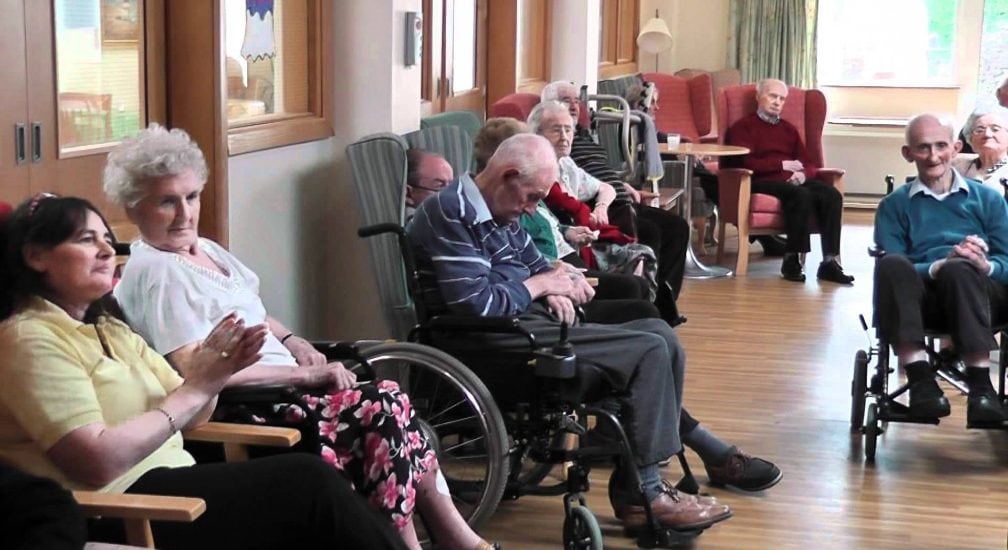
KJIPUKTUK (Halifax) – More than any other package of cash, there is one “goodie” that guarantees a provincial election (and another Liberal victory) is mere weeks away. The goodie is the government’s announcement of an extra 264 long-term beds, plus the replacement or upgrade of another 1300 beds in 17 care facilities across the province.
Appearing to remedy the long-term care problem is a big deal because over a year ago, 53 residents of Northwood in Halifax died from Covid. It is clear to all who care that lack of money and a rundown system in long-term care was behind the tragedy. At Northwood, double and triple bunked rooms, shared washrooms, poor ventilation, poorly paid staff having to work two or three other outside jobs, contributed to the deaths from Covid. Though the public was horrified, the government continued to deny Nova Scotians a public inquiry into the deaths. However with a rapidly aging population, and a galloping demand for more senior care, this government had to offer an olive branch of 264 new long-term beds for the central zone (more or less Halifax). The kicker is that the beds will be provided four to five years from now.
“Canada has a rather binary approach to ageing. You either stay at home or you go into long-term care.”
from Ageing Well, Queen’s University
First: that is a long time to hang on for the hundreds and hundreds of families whose aging relatives need long-term beds. Second, the government seems to be reinforcing, yet again, the hospital model – rather than a community model — of long-term care. A co-author of a new Queen’s University report Aging Well says, “We’re going in the wrong direction…. Canada has a rather binary approach to ageing. You either stay at home or you go into long-term care. It should be a continuum of options.” Aging Well looks at five different community-based models, and focuses on seniors’ and independent living in Denmark.
In Nova Scotia, and Canada more broadly, there are likely not many changes coming to long-term care. Yes, since the pandemic, there may be improvement to air circulation or ventilation systems in our institutions, provision of single rooms with en-suite bathrooms, and perhaps making sure that windows can open.
Why do seniors need institutional care?
Institutions will remain institutions with scores or hundreds of elderly and disabled people living out their lives in what is essentially a hospital setting. Arguably, Nova Scotia’s most advanced nonprofit long-term care facility is Northwood. It provides nursing care, activities, outings and community events and engagement. It is also home to nearly 500 residents whose hospital-like rooms are along windowless long corridors. 53 people at Northwood died of Covid during the first wave of the Pandemic. To prevent more cases of Covid, Northwood and other care homes have been under “lockdown” day and night for the last year or more. When finally permitted to have visitors, residents had to sit more than two metres from relatives and were forbidden to hug or touch them. I visited a friend in long-term care in winter 2021, and my visits had to be on the porch, no matter the weather. She, in her wheelchair, was placed on an X taped onto the deck, and my chair was located on another X, exactly two metres away. Neither of us could remove our masks. We were permitted only a 20-minute visit, and were monitored by a young aide who sat discretely to the side to ensure we did not contravene any rules.
The government’s announcement will deliver more of the same, and though it aims to reduce waiting times for long-term care from five months to two months, there is no move away from dreary, hospital-like institutional care.
None of the $96.5 million is ear-marked for improvements to wages and benefits for paid staff. In 2019, the province announced an “Occupation In Demand Stream” for Canadian Permanent Residence. It targets nurses aides, orderlies and patient services associates. The provincial government anticipates that more newcomers to Canada will be attending to the needs of the elderly and the disabled in care. All well and good, but with wages below $18 per hour (when the Living Wage in Halifax is $21.80 per hour) many immigrants will be exploited in these jobs. The online job search portal Indeed! puts the average hourly rate of caregivers in Nova Scotia at $15.70 per hour. Continuing care assistants earn, on average, just over $17 per hour. Of course wages in acute-care hospitals for aides, care assistants and porters continue to outstrip wages for those who work in long-term care.
Of course, the $96.5 million the NS Liberal government is prepared to spend on long-term care is a drop in the ocean of what is needed.
Nova Scotia government agrees to spend a paltry $25m on affordable housing
Another pre-election goodie was last week’s government announcement of a $25 million housing initiative — $20 million of which was to build houses for up to 900 Nova Scotia households. That means the government would subsidize the building of each new house or apartment by about $22,000. Each new home costs a minimum of $100 per square foot to build – and that does not include the price of land. For a 1000 square foot townhouse or home, the developer has to borrow an additional $78,000 per unit. Who knows how affordable the new housing will be for families – clearly the government aims to subsidize affordable housing. Canada Mortgage and Housing Corporation (CMHC) estimates that housing is affordable if a family spends less than 30% of its pre-tax income. Clearly the government, which will have already showered money on the developers, has to commit to spend more money to subsidize rents.
The Housing for All Working Group and the Canadian Centre for Policy Alternatives (CCPA) estimates that 30,000 new units of affordable housing is what is really needed. Over 10 years, the cost to build would be $531 million each year for 10 years, and the operating costs would be another $161 million a year for ten years. This is a realistic appraisal of the situation and a far cry from the paltry $25 million promised by the Nova Scotia government.
What more can be said but that a provincial election is coming for sure – a hare’s breath away from a federal election.
Judy Haiven is on the steering committee of Equity Watch, a Halifax-based organization which fights bullying, racism and discrimination in the workplace. You can reach her at equitywatchns@gmail.com
Check out our new community calendar!
With a special thanks to our generous donors who make publication of the Nova Scotia Advocate possible.
Subscribe to the Nova Scotia Advocate weekly digest and never miss an article again. It’s free!



